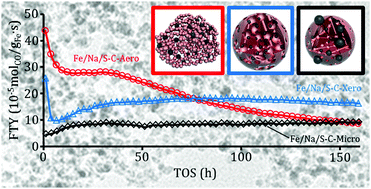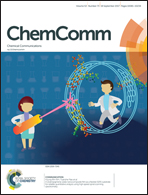Influence of precursor porosity on sodium and sulfur promoted iron/carbon Fischer–Tropsch catalysts derived from metal–organic frameworks†
Abstract
Iron-based metal–organic frameworks (MOFs) with varying porosity are converted by pyrolysis into iron/carbon catalysts with predetermined composition and tailored pore structural features for the Fischer–Tropsch synthesis of lower C2–C4 olefins. Significantly higher activity arises for catalysts with higher porosity and decreased iron particle size derived from hierarchical MOF xerogel/aerogel precursors as compared to a purely microporous MOF. Post-synthetic functionalization using sodium and sulfur promoters further enhances the catalytic properties.



 Please wait while we load your content...
Please wait while we load your content...